INTRODUCTION TO REGENERATIVE AGRICULTURE
Regenerative agriculture is all about re-imagining man’s relationship with land. Let us start at the bottom-with soil. Soil itself is truly a living entity.
Among the clay, sand, and silt particles are the living roots of plants, threads of mycelium, animals like worms and nematodes, and tons and tons of microbes.
This
dynamic,
inter-connected
community of living things is known as the soil food web. Soil is responsible for providing us with Page | 10
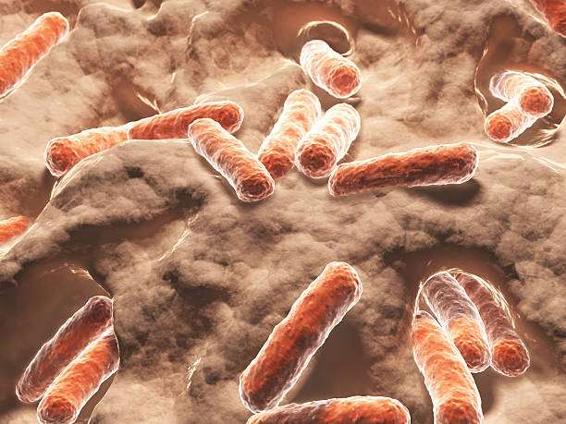
95% of the food we eat, either directly or, indirectly, according to the United Nations Food and Agriculture Organization (UNFAO). Healthy soil is defined as having the capacity to function as a living system. Soil also provides us with other services such as climate change mitigation/adaptation, water purification, and microbes that help diversify our microbiome and provide us with nutrients as well as microbes that we use to make medicines and technologies.
Worth noting, however, is that our soils are getting worn-out. Multiple issues with industrial agriculture Page | 11

are leading many to turn towards a nature-based solution. Regenerative agriculture is a principle in which food (or textiles, or forestry products) is grown in a way that instead of simply extracting nutrients and life from the soil, actually builds matter and life in the soil. Its benefits are seemingly endless, including improving bio-diversity, resilience, and environmental health.
Regenerative agriculture benefits soil, revitalizing and maintaining its fertility with the future and the next generations, in mind. The techniques of Page | 12

regenerative agriculture largely focus at mitigating negative consequences of farming activities, among which include erosion, depletion, pest invasions, desertification, salinization, decarbonization, and chemical contamination.
Page | 13
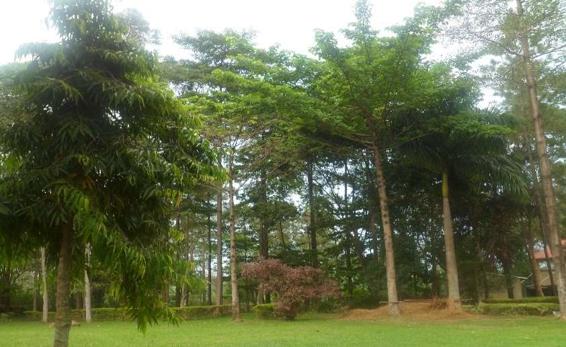
Evolution of Regenerative Agriculture
Regenerative agriculture draws from millennia of traditional practices from around the world, as well as, over a century of applied research and development within the fields of soil health, organic farming, agro-ecology, agro-forestry, permaculture, bio-dynamic agriculture, natural farming, keyline design, restoration ecology, and holistic management.
Some of the regenerative agriculture components, such as cover crops and composting, have been Page | 14
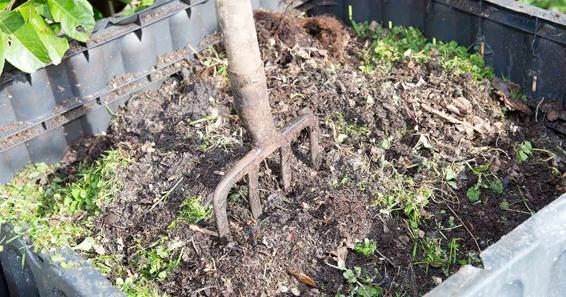
part of organic, bio-dynamic, and other sustainable farming systems for generations. Indigenous cultures made invaluable contributions to many practices, currently used in regenerative agriculture.
The term regenerative agriculture was first introduced to the world by renown researcher Medard Gabel in 1979, and further developed by Robert Rodale in 1983 and Charles Francis, et al, in 1985. However, the term was used only sporadically, re-emerging with the Rodale Institute Page | 15
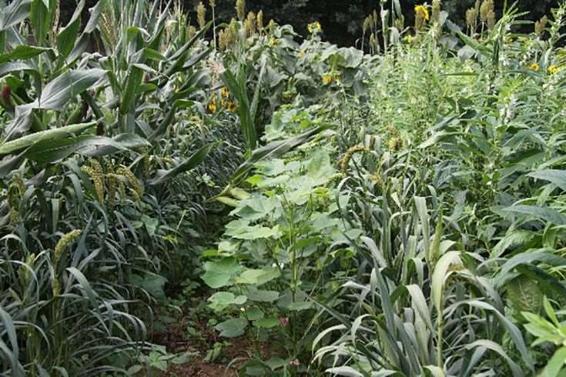
White Paper about regenerative organic agriculture in 2014. Gabe Brown published “Dirt to Soil: One Family’s Journey into Regenerative Agriculture” in 2018, and several other publications also came out around the same time.
Meaning of Regenerative Agriculture
As the name suggests, regenerative agriculture is a farming concept that focuses at rehabilitating soil and keep it productive so as to avoid expansion to Page | 16
new areas at the cost of deforestation, for example. Soil fertility is required, not only, to grow crops to support human needs, but to also provide forage for cattle, as well. This explains why the more fertile pasturelands are, the more food, animals will have.
Apart from maintaining the fertility of currently cultivated areas, regenerative agriculture practices embrace abandoned territories beyond farming activities, or in use no longer. In particular, this comprises reforestation, restoration of peatlands, fortification of buffer zones, and ecological aquaculture, among others.
Page | 17
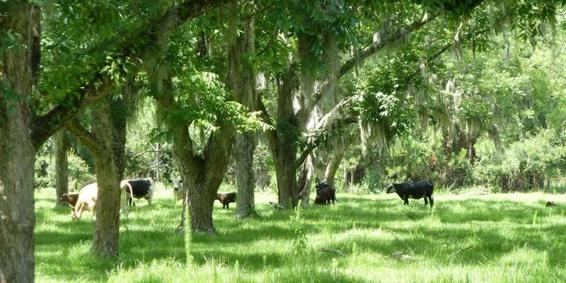
Regenerative agriculture also acknowledges the role played by the soil in keeping the earth’s carbon system in balance. It is based on heritage farming methods (also known as agro-ecological methods) practiced by indigenous peoples, all over the globe who value bio-diversity and soil health.
Page | 18
Key Note
Regenerative farming shies away from using synthetic products like fake manure, or pesticides, and refrains from using heavy machinery, which can ultimately do more harm than good to the soil. There are so many natural ways of boosting the health of soil with the use of other crops and various practices, and by so doing, farmers are able to improve the quality of these crops, while simultaneously lowering the adverse impact of farming on soil, as a whole.
Understanding Regeneration
Regeneration occurs at many different levels in nature, from individual organisms (notably earthworms and hydra), through communities of microbes, to ecosystems such as forests.
Researchers in the life sciences and the history and philosophy of science are collaborating to explore how the processes of repair and recovery observed at these different scales are related.
Page | 19
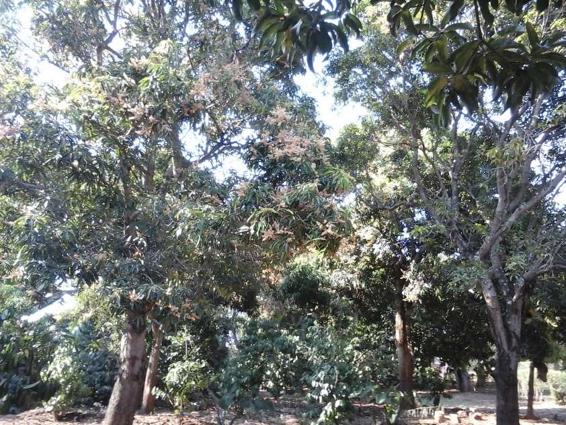
Regeneration is the process by which degraded vulnerable lands are subjected to a variety of techniques and practices which recondition them to a higher functional state. This new, functional state has the potential of regenerating itself year after year (closed loop), providing and self-regulating nutrients, seeds, feed, and water without the need of external inputs, in the long-term.
Regenerative agriculture lies in the nexus between crop production and livestock production, where Page | 20
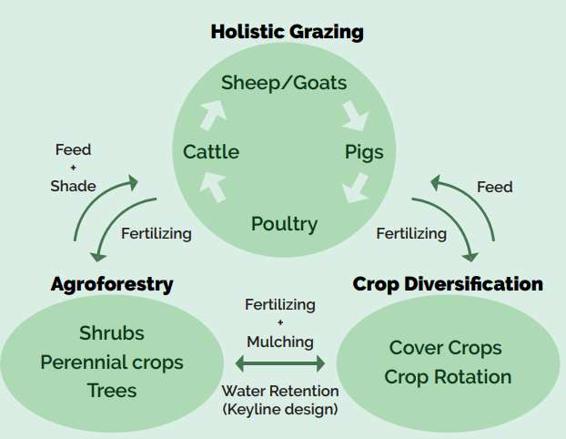
animals play an indispensable role, while healthy soils are the cornerstone.
Figure 1Holistic grazing
Key Note
Adopting a regenerative model takes time-it is not an overnight system change, but it is incredibly rewarding, and it is the future of resilient farming.
Page | 21
Rationale for Regenerative Farming One of the biggest challenges of regenerative agriculture is less profit, compared to the industrial approach. Nonetheless, farmers have a tendency of switching to the practice globally for the sake of a sustainable future. Among the reasons why many people (farmers) world over have much preference for regenerative agriculture, include:
Support global food needs. Small agricultural enterprises supply food products to the world. The farms of less than 1 hectare to 2 hectares account for 84%
of al farms control ing only 12% of global agricultural lands.
At the same time, large-scale farms comprise only 1% of all farms, controlling 65% of farmlands.
Eliminate greenhouse emissions. Greenhouse gases are one of the major drivers of global warming, and industrial food production releases approximately 26% of these emissions nowadays.
Page | 22
However, regenerative agriculture, addresses the issue, convincingly.
Boost yields. Regenerative agriculture basically encourages organic farming. Organic farms suffer less from weather extremities, producing more crops under unfavourable weather conditions than traditional agricultural enterprises.
Mitigates drought. Organic matter leads to the accumulation of soil moisture as well as improvement of water retention and infiltration.
Building it is among the principal regenerative agricultural techniques.
Economic
growth
and
development.
Regenerative farming also contributes to growth of different economies, leading to economic developments, in the long run.
Regeneration of grasslands. Worth noting is that, 70% of grasslands, worldwide, are currently out of use due to degradation. However, the Page | 23
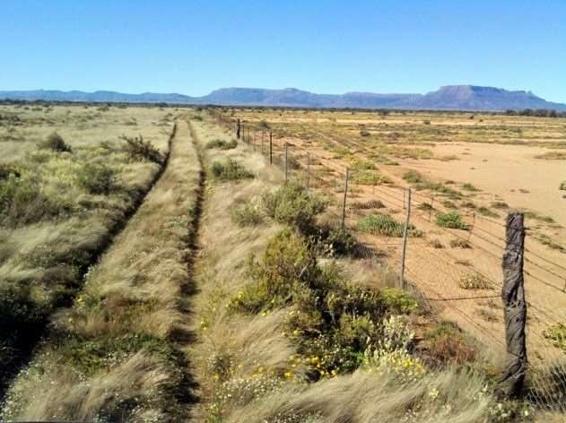
situation can be tremendously improved by the adoption of holistically managed grazing, which is an efficient regenerative agricultural technique.
Contribute to bio-diversity. Versatile species are beneficial, not only to the farming business, but also to environmental sustainability, which is ultimately ideal in regenerative farming.
Raise nutritional value. By engaging in regenerative agriculture, agricultural diversification Page | 24
is realized. As a result, the diversity of cultivated crops ensures a more balanced nutrition.
Barriers to Regenerative Agriculture
Part of the difficulty in getting farms to adopt regenerative practices is the economic structure that encourages farmers to maximize production and locks them into a system of chemical inputs and monoculture production. This is the product of government policy and corporate control of the food system. Only democratizing the food system and rebuilding fair markets and infrastructure to supply regional food systems can help align food production with natural systems and community needs.
The industrial food system relies on commodity crops and products like corn, soy, and meat that are produced in huge amounts to be identical inputs to the processors. This has created a system where Page | 25
farmers compete with one another to produce the most of these commodities, as possible.
In addition to the creation of wide swaths of industrial monocultures, this implies, these products are usually produced in excess, contributing to agricultural price fluctuations.
As farmers and ranchers try to make up for low prices with higher volume, it starts a vicious cycle that hurts farmers and benefits the large multinational buyers, who buy their raw materials very cheaply. However, it should be noted that, the government’s policy here is focusing at smoothing out the ups and downs of this system by giving farmers subsidies that ensure they manage to stay in business, although this ultimately encourages many to continue producing the same products in excess.
Page | 26
Advocates for regenerative agriculture argue that, changing, or eliminating these incentives, might help to discourage industrial monocultures. More regulation of agriculture and agribusiness-measures like banning certain pesticides, eliminating factory farms, and doing more to monitor pollution from fertilizer and manure-would equally bring more of the true costs of industrial agriculture to the price tag of food and make regenerative agriculture more competitive and cost efficient, than ever.
Consolidated agribusinesses that sell seeds, chemicals, food and more, have an outsized say on the food policy, spending more than UGX
100,000,000 billion annually in lobbying to keep most of agriculture deregulated.
Corporations have also tried to capitalize on the surge of interest in regenerative agriculture, introducing their own definitions of what it means, Page | 27
to be sustainable. These typical y include only environmental claims about soil health and carbon sequestration without the acknowledgement of the need for a more holistically regenerative food system. A closer look at these corporate initiatives is cause for concern: many lack actual monitoring to confirm whether they are in fact employing regenerative techniques and also many are using terms like regenerative, solely as marketing.
In most cases, agribusinesses are advancing visions of regenerative agriculture which actually require more of their proprietary products like herbicide manufacturers selling their products as a of way killing off a winter cover crop. This can blunt the effectiveness of cover-cropping as an effective technique of regenerating soil and fostering biodiversity.
Page | 28
Similar problems apply to some of the policy proposals aimed at encouraging “climate-smart”
agriculture. For instance, some policymakers believe that carbon markets, where farmers are paid by government, or other organizations for the carbon stored in their fields, are a good mechanism of encouraging farmers to pursue better soil health.
However, without better measuring and monitoring, there is not much to guarantee carbon is actual y stored, and there is no way of ensuring that farmers will continue protecting the soil’s health in future. This along with the eager way lobbying groups for corporate agriculture have latched onto the proposals, leads critics to say initiatives like carbon farming are just another way for large operations to earn money without making substantial amends.
Page | 29

People who already use regenerative methods may even be left out, since they may not be able to demonstrate they have added new carbon to their already healthy soil.
Key Note
Without robust understanding of what regenerative agriculture appears like in our food system, there is a danger that some organizations will pull out the bits they like, call it “regenerative”, but continue largely with business, as usual.
Page | 30
The corporate food system may seem inescapable, but the reality is that it does not even feed most of the world. At least one third of all the world’s food is produced by the smallest farms, and at least half comes from those under 25 acres, small operations generally run by families. These small-scale farmers may not have the lobbying power of corporate interests, but they can still band together to advocate for a better food system. A movement of smal farmers worldwide (La Via Campesina), has successfully influenced policy from the United Nations (UN) and different economies, worldwide that encourages food sovereignty and also champions genuinely regenerative agriculture.
Limited consumer awareness and demand
Consumer demand is a principal requirement to the successful adoption of regenerative agriculture, because acceptance by the consumers is a clear Page | 31
indicator that regenerative agriculture is a sustainable business model.
Key Note
The Consumer, in the end holds all the power, because without effective demand (of course, by the consumer), none of these lasts and change does not really happen, as expected. If I could talk to each consumer individually, I would tell them, ‘you have way more power than you realize’.” Matt Maier, Thousand Hills Lifetime Grazed Limited financial and technical support
Transitioning to regenerative agriculture can entail substantial financial risk as new techniques are mastered and up-front investments in equipment, inputs and labour are made. Markets and market incentives for regenerative agriculture are very limited, as are financial risk instruments including subsidized federal crop insurance for diversified operations. The high cost of farmland is yet another Page | 32
barrier general y to new farmers, including those interested in regenerative agricultural production.
Indeed, a number of aspects of regenerative agriculture can be especially challenging including integrating livestock, or introducing new cover crops and crop rotations. However, lack of farmer training programmes were identified in landscape analysis of ongoing efforts to accelerate regenerative markets. The same can be said for farm retailer and advisory training, including independent crop consultants and agriculture retail agronomists.
Whereas farmers may have the interest in investing in the adoption of new practices, they rely on their trusted local agricultural retailer, agronomist, or salesperson for information and advice on how the adoption of new management practices can improve their operation.
Agricultural retailers and advisors, therefore, may have the Page | 33
ability to increase adoption rates of conservation practices by encouraging farmers and providing them with the necessary information, resources, and services, much needed.
Beyond training, hands-on technical assistance is also difficult to access for most farmers.
“When farmers come home from a conference, they sometimes have a challenge figuring out how to apply what they have learned to their unique system. And that's really where technical assistance has been successful.” Jay Watson, Sourcing Sustainability Engagement Manager, General Mills There are so many funding programs across the globe towards sustainable agriculture. However, while many of these programs have potential to also benefit at least a portion of farmers transitioning to regenerative practices, for example those pursuing organic certification might participate in the cost-share program, there are no specialty government Page | 34
programs targeting regenerative agriculture, and several grants as well as other funding agencies are largely not yet addressing regenerative agriculture.
It is important to note that, sustainable agriculture research is currently being underfunded. While food companies have stepped-up their efforts to fund organic farming research in recent years, there are opportunities to fund regenerative agriculture research to help create better insights into the outcomes of regenerative agriculture.
Regenerative Agriculture and Climate Change Maintaining soil vitality is the ultimate priority for each agribusiness, regardless of its size, which appears to be a daunting task nowadays, and a top-notch objective of regenerative agriculture.
Page | 35

Recently farming has been strongly impacted by climate change and regenerative practices struggle to reverse it. Many farmers have endured tremendous losses due to floods and droughts, high temperature hits and severe frosts, wildfires, tornadoes, storms, and hurricanes, among others.
Nature calamities cast a serious threat to agribusiness and necessitate adaptation strategies.
Page | 36
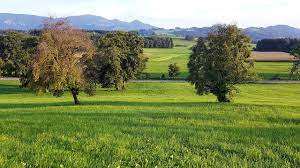
Abnormal heat in some African regions forces landowners to abandon their businesses since vegetation cannot survive burning sun rays and droughts. Furthermore, severe droughts cause severe evaporation, and in return, strong evaporation causes abnormally heavy rainfalls, or even more severe droughts.
Climatic patterns change, compared to historical weather data, and whereas in some regions precipitations are scarcely lower than the average Page | 37
ones, in other areas they are excessively high and as a consequence this leads to floods. As a result, plants can cope neither with droughts nor waterlogging, leading to their death. Other adversities of extreme downpours include erosion and water pol ution because soils cannot absorb huge amounts of water within short periods of time.
Regenerative agriculture addresses the problem of droughts with organic matter, famous for its water-retention capacity and boosting soil fertility. No-til farming contributes to carbon sequestration.
Page | 38
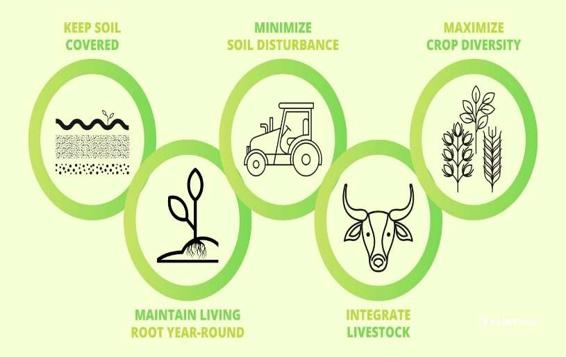
PRINCIPLES OF REGENERATIVE
AGRICULTURE
Under this section, the following principles of regenerative agriculture will be discussed:
Maximize crop diversity
Minimize soil disturbance (no til , or low till)
Keep the soil covered (cover crops)
Integrate livestock
Reduction, or elimination of synthetic chemicals.
Page | 39
PRINCIPLES
OF
REGENERATIVE
AGRICULTURE
Regenerative agriculture prioritizes environmental sustainability and human health. It means that any farm should contribute to nature protection, apart from growing salable crops. Among the associated benefits of regenerative agriculture include biodiversity, soil properties, and the environmental state among others. Mainstream agricultural practices including tillage, mono-cropping, fal ow land, and chemical pesticides, as well as fertilizer usage inhibit these processes, and as a result this contributes to rapid lose of soil carbon to the atmosphere, thereby jeopardizing the ability to produce food for the future.
Page | 40

A typical farmer practicing regenerative agriculture must, therefore consider the following principles.
Figure 2Regenerative Agriculture Principles Summarized Page | 41
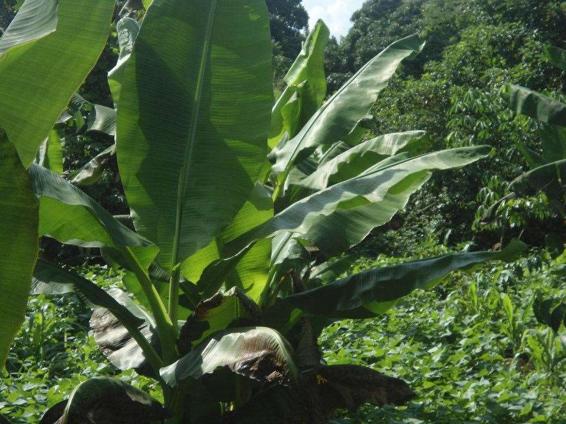
Maximize crop diversity
Regenerative systems rely on vibrant healthy soils and thriving populations of beneficial organisms, but these in turn rely on the possession of a varied habitat to thrive in. Industrial agriculture relies on monocultures-large areas where a single crop is grown—because they are simpler to maintain with chemicals and easy to harvest and market, as well.
But these monocultures do not foster a productive agro-ecosystem.
Page | 42
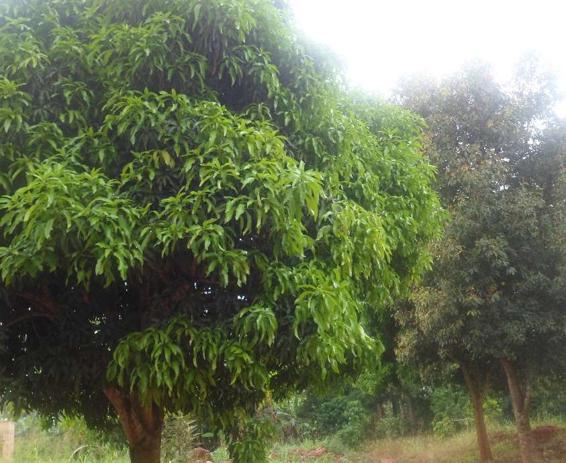
Multiple crops rotated in fields, perhaps with integration of livestock mimics natural ecosystems and enhances bio-diversity which later contributes to the development of healthy soil.
Page | 43
Key Note
The rule of thumb in ecology is the more diversity the more resilience and vice-versa. Ecosystems rich in diversity are better able to withstand and recover more readily from stresses such as climatic extremities, human adversities, and degradation, among others. Integrating habitat for pollinators, or other beneficials in farm design, practicing crop rotations, mixing crops and livestock, and opting out of Genetically Modified Organisms (GMOs) and chemical inputs are all vital practices that preserve and boost bio-diversity.
Minimize soil disturbance (no till, or low till) Scale-up farming practices that help protect soil health and increase soil organic matter. Minimizing disruption to the soil ecosystem keeps roots connected to unique communities of microorganisms that are key in the processes to build healthy soil and store carbon.
Keep the soil covered (cover crops)
Keeping the ground covered with plants, is associated with a number of benefits, among which Page | 44
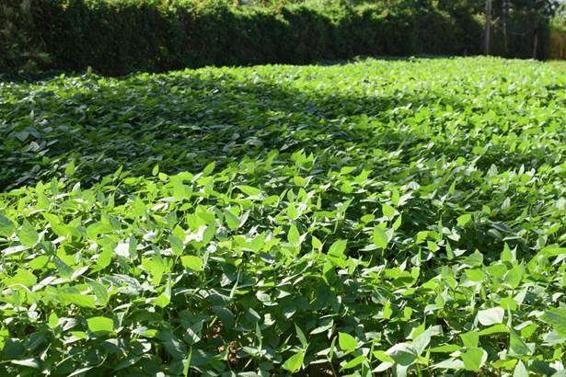
include-allowing for water and carbon to be absorbed by the soil which keeps the soil alive, helps eliminate soil erosion by preventing the soil from blowing or washing away, and prevents desertification as well.
Integrate livestock
Integrating livestock, also known as planned grazing is yet another crucial element of regenerative agriculture. Worth noting, is that diversity in regenerative agriculture does not end with crops.
Page | 45
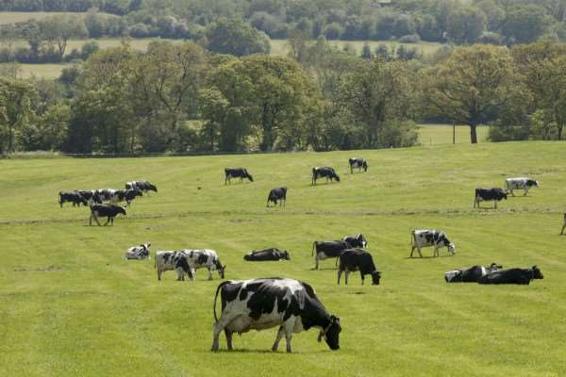
Livestock are yet another critical component of many regenerative systems, as already noted.
In the industrial food system animals are not integrated into agro-ecosystems-cattle, pigs, as well as birds like chicken are housed away from crops, or pastures, crowded into tight quarters, fed diets of resource-intensive industrial grain, and the multiple quantity of manure they produce leaks into water sources and causes serious imbalances.
Page | 46
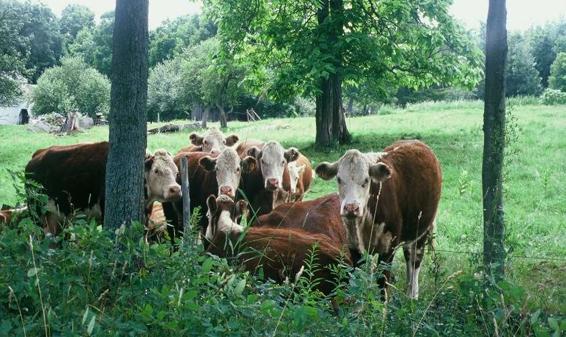
Even when that manure is col ected, it causes several other problems, for example, it generates huge amounts of methane, a potent greenhouse gas as it decomposes and when it is applied on fields as fertilizers, it is often added far in excess of what is needed causing additional water pollution issues.
Page | 47
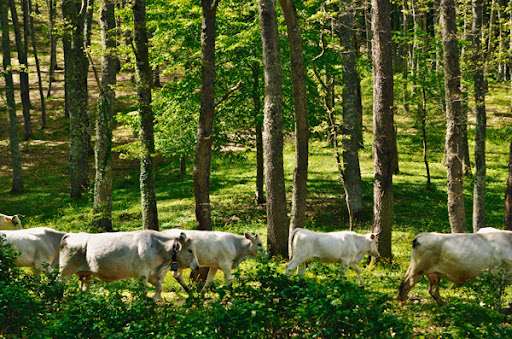
On the contrary, regenerative systems make use of an appropriate number of animals for the agroecosystem and take advantage of their role as nutrient cyclers. Grazing animals can take foods like grass that are inedible to humans and later turn them into edible meat and dairy. Their ability to do this on steep hills, dry environments, or in other inhospitable areas enables farmers and ranchers make the most of their land.
Page | 48
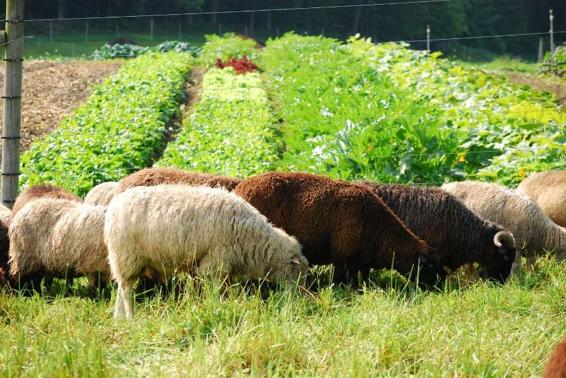
Once used in appropriate amount, animal waste is equally beneficial-manure contains high levels of nitrogen, phosphorous and other nutrients which are central for plant growth, while decomposed manure also adds essential organic matter to the soil. These nutrients can be used to improve soils where crops are grown, but equally demonstrate huge benefit to the pastures where animals graze.
Page | 49
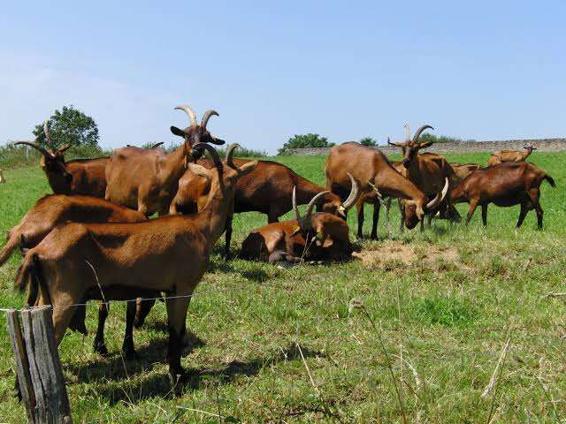
When cattle and other animals are carefully managed on pasture, they can help foster better plant growth, higher bio-diversity, and better soil health, as well. This process involves intensively grazing sectioned-off areas of a field al owing animals to graze most of the available vegetation in one area, prior to moving them to another. The original area recovers whereas the animals graze the subsequent areas. This is what experts in regenerative agriculture have described as Page | 50
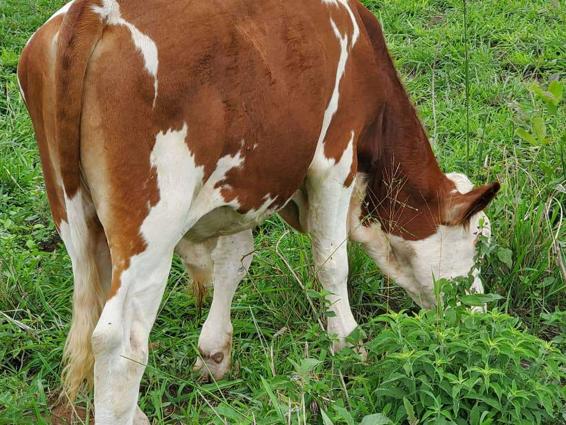
rotational grazing. The periodic stresses of heavy grazing, encourage plants to root deeper while the manure that animals leave behind, enriches soil and equally promotes strong re-growth.
Cattle are not the only animals that can be raised on pasture, only that others might require some supplemental feed. Pigs can equally be beneficial players in a pasture, digging deep in soil and incorporating more manure and other nutrients.
The pigs also benefit from the natural open Page | 51

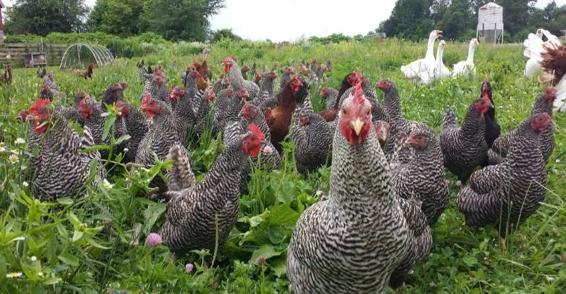
environment, for example they are less stressed and less likely to develop parasitic infections.
Chicken, can as well be moved around on pasture, where they feed on insects and plants, particularly on weeds that can otherwise overtake pastoral environments.
Page | 52
The benefits from appropriately managed rotational grazing can be immense-the carbon deposited in manure and sequestered by strong plant roots helps support more organisms in soil and draw down carbon from the atmosphere.
These benefits are most obvious, especially when former cropland is turned into pastureland. In one study of a regeneratively managed farm, researchers found it that cattle helped to sequester more carbon in the soil than they emitted themselves enabling the farm have far lower emissions per pound of meat than the conventional competitors.
Researchers modeling the whole food system suggest that if rotational grazing replaced much of the industrially produced grains that feed livestock today, the increment in soil carbon could offset the greenhouse gas emissions that come from erosion on poorly managed cropland.
Page | 53
While these would be significant gains, this involves more than a simple dietary change for livestock. In a truly regenerative system animals should not overwhelm the land they graze on and this implies, that they cannot be kept in dense quarters like they are on concentrated animal feeding operations (CAFOs). Grass-fed animals are also lighter and slower growing, so producing the same amount of meat and dairy on pasture would require far more land than presently used for conventional agriculture.
Whereas there would be enormous benefits to trading some crop land for pasture-well managed pastures are healthier agro-ecosystems than industrial monocultures-it is crucial to address the possibility that this might also cut further into wildland that is best left undisturbed.
Page | 54
Poorly managed grazing on vulnerable land is a key driver of extinction for endangered species world-over, specifically for carnivores like wolves that ranchers see as threatening to their herds. The conversion of healthy eco-systems like forests into pasture for livestock would aid in the releasing of more carbon dioxide into the atmosphere than even a well-managed system could sequester.
Ultimately, regenerative systems do need animals to really thrive, though a genuinely regenerative food system that preserves wild lands and wild biodiversity might not produce the amount of meat and dairy that has been grown accustomed to in the industrialized food system.
Reduction, or Elimination of Synthetic Chemicals Utilization of synthetic chemical fertilizers discourages the plant to seek nutrients deeper in the Page | 55
soil and work with microbes for its nutrition which results into less carbon sequestration. Utilizing chemical pesticides further disrupts the soil microbial community and has other adversities on bio-diversity, and contributes to land and water pollution. Also important to note, is that pesticide exposure through the food we eat; air we breathe, and water we drink has been linked to health adversities that range from birth defects to cancers and neurological disorders, as well.
Key Note
All the regenerative agricultural principles focus at ensuring a cycle of regenerative agriculture season-by-season, year-by-year. They are not universal, however, and their combinations and applications depend on the specifics of each particular farm.
Page | 56
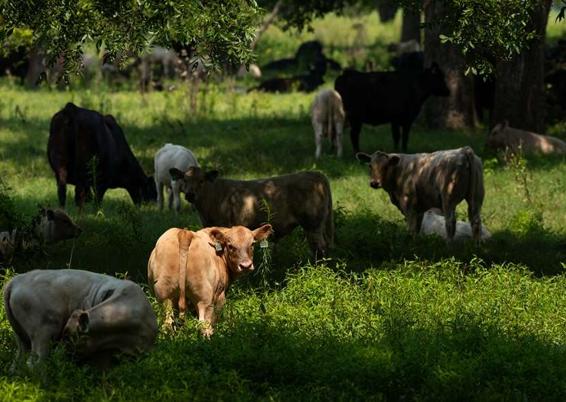
REGENERATIVE
AGRICULTURAL
PRACTICES
This section discusses some of the following regenerative agricultural practices-biochar and terra preta; annual organic cropping; compost and compost tea; cover cropping with green manure; prioritizing perennial crops; agro-forestry; holistic livestock management; zero (no-till) to reduced tillage and pasture cropping; animal integration into crop production; ecological aquaculture; silvopasture; conservation buffers and riparian buffers; ecological urban planning; cold climate adaptations, and social and economic justice
Page | 57
REGENERATIVE AGRICULTURAL PRACTICES
Regenerative farming is not only limited to saving or restoring woods, adding organic matter, and boosting soil fertility. The environmental impact of regenerative
agriculture
comprises
carbon
sequestration in order to eliminate its emissions to the atmosphere, reduction of water and soil pollution with reduced chemical inputs, enhancing bio-diversity, and many others. With more forests saved and soil carbon stored, we are in position to get purer air to breathe and mitigate the greenhouse effect. More still, spared natural habitats are a necessary condition to preserve bio-diversity.
Key Note
Regenerative practices focus at preserving, or reclaiming lands and habitats, like peat lands, wetlands, and forests, among others. These types of eco-systems are key to mitigating climate change, and ensuring the protection of diverse species which inhabit them. Regenerative practices can as well remediate soil from chemical, or hydrocarbon contamination.
Page | 58
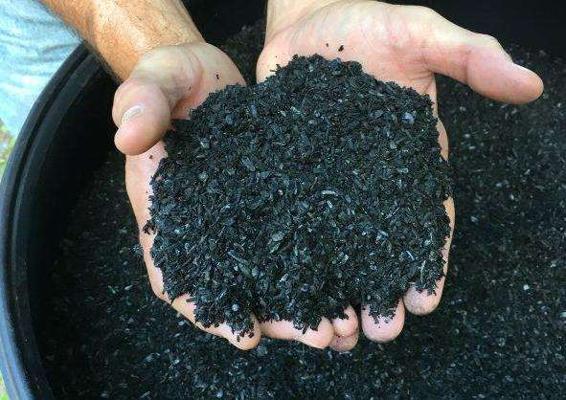
The list of regenerative agriculture practices is quite extensive-as can be seen below:
Biochar and Terra Preta
Biochar is a healthier alternative to natural charcoal and is achieved through burning forestry and farming wastes. The term terra preta is borrowed from Spanish for anthropogenic black Indian soils with too much charcoal content in the Amazon basin.
Black carbon, conditions the presence of organic matter and nutrients in the ground, and is relatively immune to chemical and microbial adversities.
Page | 59
This explains why it is in position to maintain fertility for long which is of great interest to regenerative agriculture practitioners. In fact, research indicates that black carbon content in terra preta exceeds its content in the infertile neighboring soils of the region up to seventy times.
Biochar is then used in the same way compost is, added to existing soil to create nutrient-rich soil without fertilizer application, manipulation of soil, or carbon dioxide production. Biochar is a highly fertile substance generated from burning organic matter in an anaerobic environment. When added to soil, biochar acts as a source of nutrients grossly contributing to soil fertility.
Page | 60
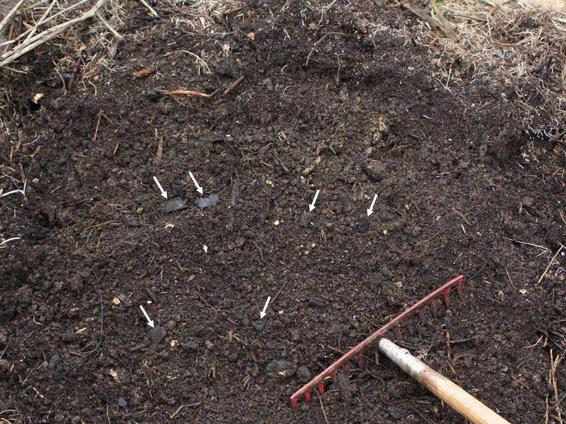
Annual Organic Cropping
Annual organic cropping advocates for the use of non-chemical fertilizers and pesticides to mitigate the adversities on nature and humans. This regenerative agriculture method is more expensive, less profitable, and more labour-consuming compared to stronger industrial practices.
However, agro-related businesses tend to reap considerable benefits from regenerative agriculture implementation in the long-term perspective with a Page | 61

much healthier population and environment, as well.
Compost and Compost Tea
Compost provides organic matter and restores soil fertility which is a vital objective in regenerative agriculture. The optimal concentration of organic matter in the top earth layers varies from 3-5% and should be incorporated into the soil profile for at least six inches.
Page | 62
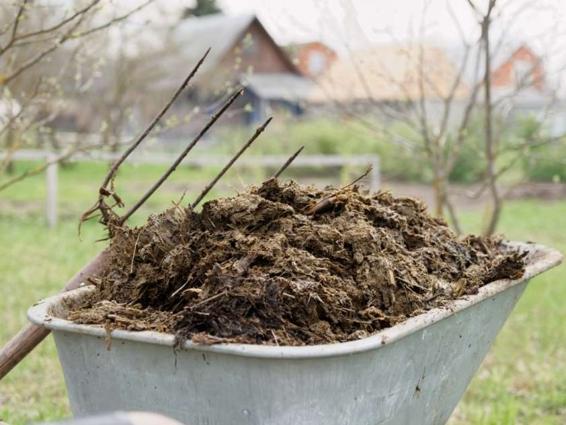
Compost tea is a brewed liquid (hence, the name derives) that supplies micro-organisms and soluble nutrients vital for plant growth.
Compost is made up of rich organic matter, the end result of decomposed kitchen waste, manure, and yard waste. Once added to agricultural fields, or mixed with garden soils, compost supplies a variety of nutrients, providing food for soil microbes, and creating healthier soils and crops, as well.
Page | 63
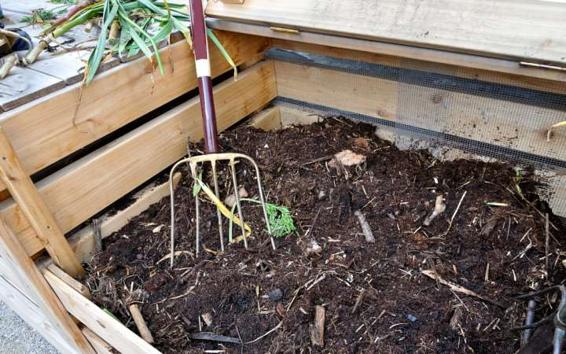
The benefits for farmers and fields range from reduced costly off-farm inputs, to greater resistance to pests and plant diseases and also to increased moisture retention. This is a win for climate change too, as well, resulting in soils with living ecosystems of micro-organisms which are in position to capture and store excess carbon, taking it out of the atmosphere and sequestering it where it can be used to enhance the farm’s productivity. This Page | 64

contributes to a reduction in the need for additional harmful energy-intensive petrochemical pesticides and fertilizers. Diversion of organic wastes from landfills equally results in fewer methane emissions, which also leads to a in reduction in potent greenhouse gas.
Several agricultural practices are site-specific, but composting is one fundamental element of organic Page | 65
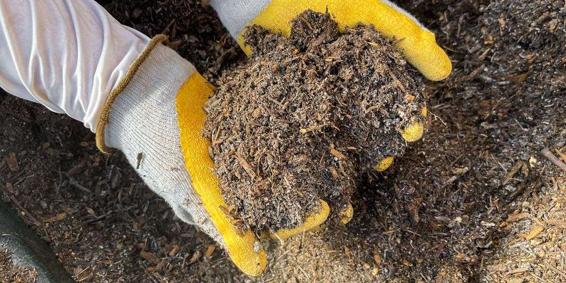
and regenerative agriculture that can be adopted by anyone growing and/or eating food.
Key Note
Organic soil fertility implies more than ensuring just provision of plants with macro- and micro-nutrients. It is also about ensuring the restoration of the soil’s biological ability to cycle nutrients through the application of green manures, crop rotations, compost, and animal manures, as well. Artificial and synthetic fertilizers have created imbalances in the structure and function of microbial communities in soils, creating a dependent agroecosystem and weaker, less resilient plants.
Page | 66
Cover cropping with Green Manure Green manure is plant matter that is grown alongside the primary crop. It provides several benefits, among which include:
Bringing diversity to the field, which in turn can bring diverse pollinators and pest predators.
Enables incorporation of the cover crop into the soil. Indeed, this is a very direct way of regenerating soil, providing it with bio-mass to feed on and build itself up. Addition of cover crop as green manure equally leads to an increase the nutrient content of the soil, and the crops.
Farmers can also enhance their carbon storage potential further by adding mixed species of cover crops and diversifying cropping rotations-both build soil health, store more carbon, and help keep soils covered and their micro-biome Page | 67
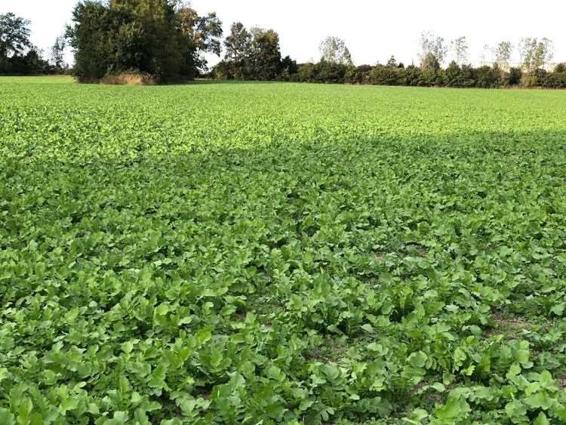
(communities of microbes) nurtured year-round.
In modern-day industrial agriculture, lands are often planted with a single crop and/or tilled and left bare (fallow) for long periods of time (also known as mono-cropping). Cover cropping is the growing of beneficial plants during these times of rest, or in combination with the primary crop-significantly contributes to a reduction in soil erosion and agricultural runoff after rainstorms, or Page | 68
irrigation. Cover crops include wheat, barley, peas, clovers, pumpkins and many others (often grown in mixes), and can also be used in consumer products like beers and cereals. Whereas many farmers recognize these benefits, current crop insurance policies limit farmers from using cover crops.
Rotating crops, instead of planting the same mono-crop year-after-year is yet another practice that encourages restoration of healthy soil eco-systems.
This method enables the rebuilding of farm systems that provide more nutrient-dense crops for our own healthy diets. Crop rotation equal y enables farmers reduce the need for petrochemical-based pesticides, since their whole farming system provides more natural resistance to pests-this is critical for the health of our communities, as Page | 69
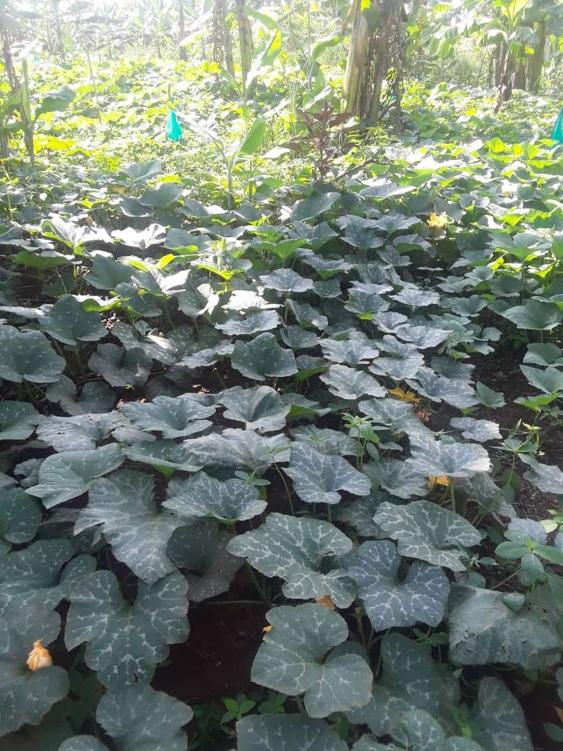
chemical drift and contaminated surface and ground water is a critical health threat.
Regenerative agriculture incorporates the wisdom of including both diverse cover crops and crop rotations. It equally helps farmers choose cover crops that use nature to supply their crops with organic nitrogen and rebuild many other key aspects of soil health at the same.
Page | 70
Key Note
Keeping the soil covered allows for the conditions that enable micro-organisms to thrive. Cover crops are the most well-known means of soil cover, where a non-commercial crop is planted to anchor valuable top soil, fix nitrogen, build organic matter, and retain more water in the soil. Other methods of covering soil include mulch and soil covering textiles.
Mulching involves covering the soil around plants with organic matter which keeps moisture from evaporating and adds organic matter to the soil as it decomposes. Soil cover textiles suppress weeds and prevent erosion and evaporation.
Prioritizing Perennial Crops
Diversity above the ground encourages diversity in the soil, as well. Perennials-plants that provide harvests for multiple growing seasons-range from berries to tree crops and can be integrated into any size farm or garden.
Page | 71
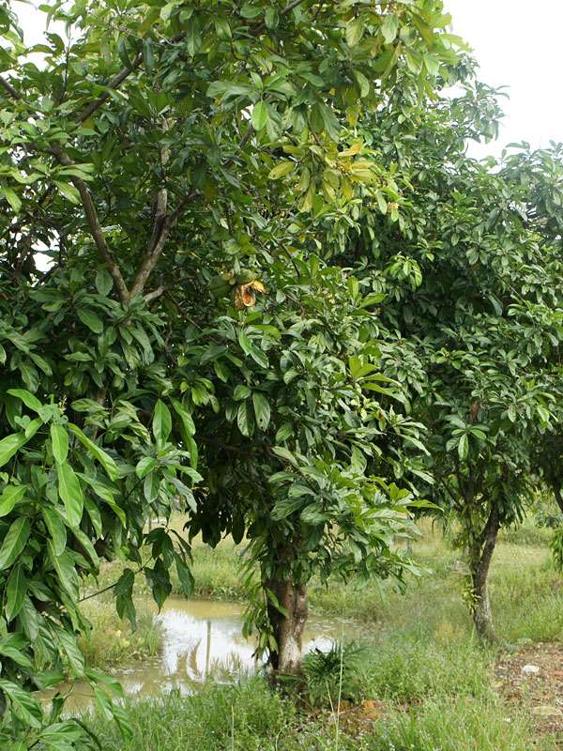
Because perennial plants do not need to be planted annual y, soil disturbance is minimized, enabling soil organisms to thrive. The plants themselves take carbon out of the atmosphere and store it in their trunks and stems, including their deep root systems, as well.
Page | 72
Perennials usually have extensive root systems with the added benefit of enabling the storage of carbon deeper in the soil where it is more stable. Diverse crops in general support healthy carbon-sequestering soils because they encourage diverse soil communities and distribute carbon at varying depths underground. They also are better able to resist extremes in weather like droughts and floods, and have the ability to defend themselves from pests. Perennials function best when planted using regenerative organic approaches that include addition of pollinator habitat and inter-cropping with nitrogen-fixing support species.
Key Note
Perennials are plants which are alive year-round and are harvested multiple times before dying. They include fruit trees, nut trees, berry shrubs, pastures, certain perennial grains, and some perennial vegetables like asparagus. They all develop deep roots that improve soil structure, increase carbon sequestration, and water infiltration, and can contribute to climate change adaptation and mitigation. Overall, they help ensure long term food and water security.
Page | 73
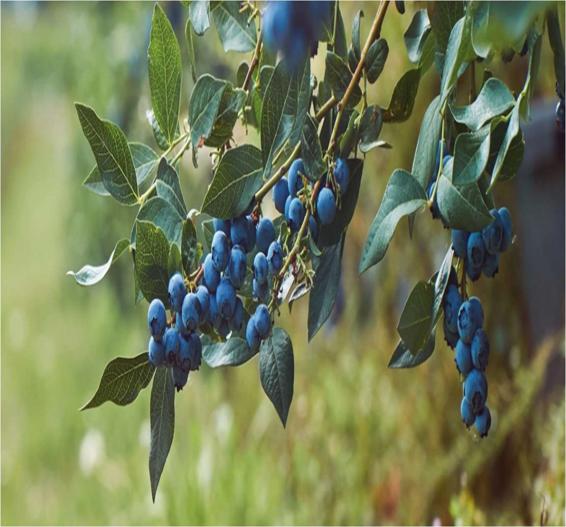
Agro-forestry
Agro-forestry is a type of agriculture that incorporates the planting, cultivation, and conservation of trees, alongside crops, or livestock farming.
Page | 74
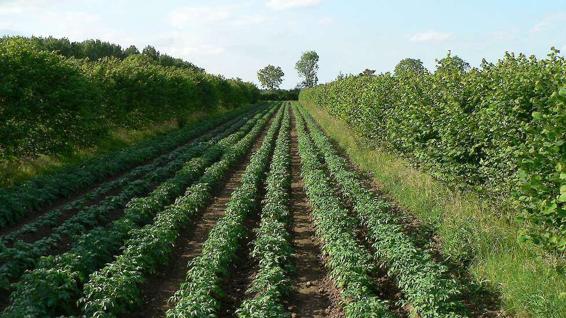
It [agro-forestry] is a model of land management that integrates the unique relationships within a given eco-system and offers benefits on many fronts-environmental, economic, and/or social. It improves bio-diversity, sequesters carbon, protects the plants from extreme weather, and equally improves water retention, among others.
Page | 75

Key Note
Agro-forestry refers to the integration of trees in agricultural systems either with crops or pasture land. Trees can enhance both animal and crop production by increasing the water holding capacity of the soil, by providing habitat for beneficials and by enriching the soil microbiome. Moreover, trees can themselves provide a yield, in fruits, nuts or timber.
Holistic Livestock Management
Holistical y planned grazing as regenerative farming practice suggests rotational usage of pastures that Page | 76
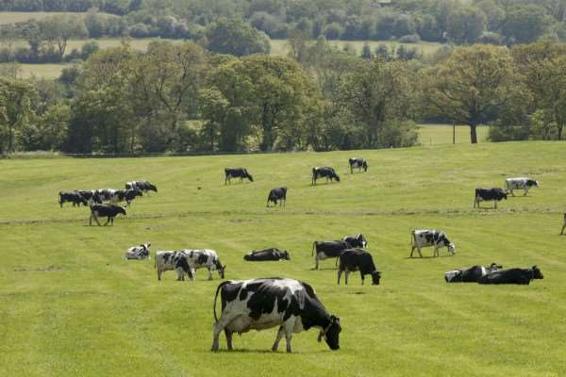
are similar to animals’ natural behaviour. While moving from area to area, cattle eat up fresh grass, incorporate green and animal manure thereby boosting pastureland fertility and paving way to the re-growth of grass on the other terrains.
This kind of grazing involves managing livestock using multiple-small paddocks aimed at providing periods of short duration/much stock density grazing accompanied by adequate forage rest and recovery periods. The central purpose is to mimic Page | 77
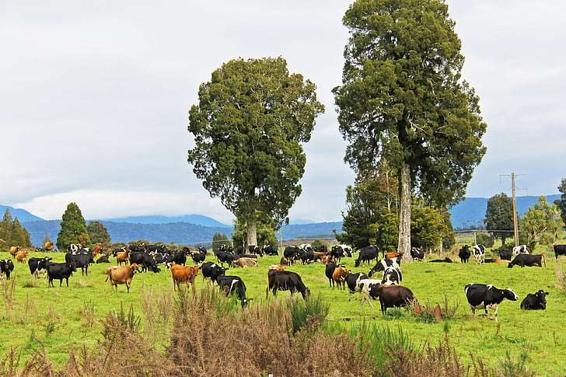
as closely as possible the predator-influenced herd migrations of wild ruminants such as ancestral bison and elks. The tendency for a number of grazers is to keep to a planned schedule, though mother nature frequently throws curve bal s and best laid plans do not always yield the desired fruits.
With adaptive grazing management, there is no pre-set schedule. It is based on reading the conditions of the land and forage, making an assessment of the needs of the livestock, and at the same time planning the grazing as expected.
Page | 78
When intensively grazing smal paddocks for a short period of time, mistakes are usually limited to very small areas. Adaptive grazing management involves taking a look at how native ecosystems function and mimicking it with domesticated animals.
Key Note
Holistic livestock management is an approach that take into account the management of animals in ways that mimic nature, that is, in dense herds that rotate frequently. Farmers move the animals through temporary fenced areas called paddocks at a frequency that depends on multiple factors. Livestock eat, fertilize with their manure, and trample the grass and move on leaving the pasture to recover. Not only does this improve animal welfare conditions, but it equally produces highly nutritious food and at the same time captures carbon from the air and stores it in the soil, contributing to the desired levels of soil fertility.
Page | 79
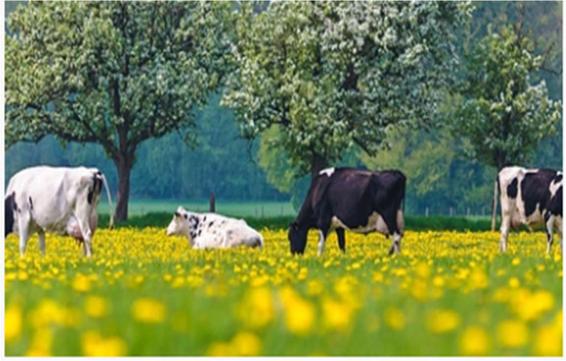
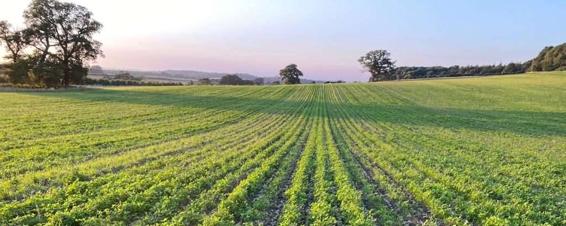
Zero (no-till) to Reduced Tillage and Pasture Cropping No-till farming propagates as little soil disturbance as possible which contributes to a reduction in soil erosion and carbon dioxide emissions. In this case Page | 80
seeding is carried out with specialized drillers, or disc planters.
Pasture cropping considers an integral part of the regenerative agriculture technique when grains are used as grasses for grazing. Additionally, it also helps farmers avoid bare soils, as a result, mitigates erosion.
New studies indicate that certain types of low to zero tillage especially single pass no-till provide outstanding carbon storage potential while contributing to a reduction in the amount of carbon released into the atmosphere. By so doing, crop residues and cover crops are rol ed flat and left to keep soil surfaces covered year-round, where they effectively become mulch that feeds healthy soil micro-organisms and expedites up the process of storing additional carbon in the soil. Crops are then Page | 81
planted into the mulch, keeping weeds to a minimal level.
These practices also contribute to a rise in rainfall infiltration to enable prevent storm flooding and limit soil erosion while enhancing soil moisture retention-adding protection for the farmer against drought. Reduced tillage and mulching equally increase the soils’ ability to sequester carbon and reduces greenhouse gas emissions coming from the soil, farm vehicles, and the factories that produce synthetic fertilizers and pesticides, at the same time.
Key Note
Conservation tillage is a paradigm shift in agriculture. It promotes leaving fields until ed, or minimizing tillage in order to minimize soil disturbance, to enable the soil ecosystem thrive and perform its required roles. Reducing tillage can equally minimize soil erosion leading to a reduction in the use of chemical inputs and fostering to more resilient agricultural system.
Page | 82
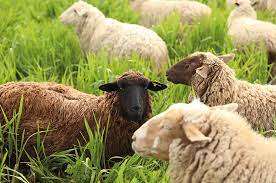
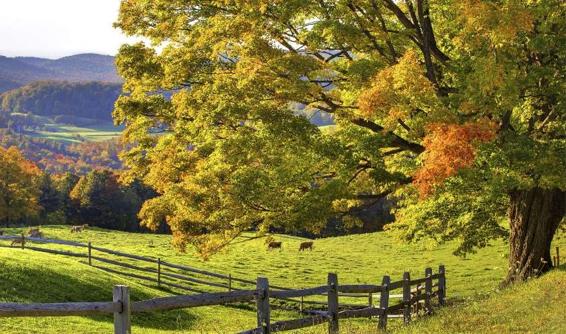
Animal Integration into Crop Production
Page | 83

Such a combination immensely promotes soil fertility, assists in weed and pest management by ensuring the introduction of biological enemies to unwanted species and is at the same time beneficial for livestock itself. This is because regenerative agricultural approach is closer to wildlife conditions compared to indoor breeding.
Ecological Aquaculture
The eco-friendly regenerative agricultural approach to fishery and aquaculture encourages planting Page | 84
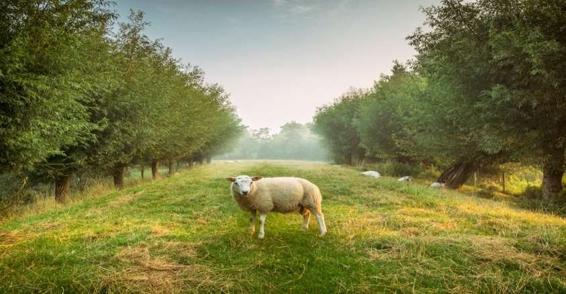
riparian buffer strips to decrease sedimentation, water run-offs, give shadow and extra food for aquatic inhabitants with tree leaves. It equally demands a reduction in chemical agricultural inputs that pollute water bodies due to leakage from farmlands.
Silvopasture
This regenerative agricultural technique introduces trees to pastures, or grasses to woodlands targeting an additional benefit-trees on grazing areas provide shelter for animals and/or poultry on hot sunny days and serve as windbreaks.
Page | 85
Furthermore, they are an alternative source of food for cattle and provide organic matter with their foliage.
Conservation Buffers and Riparian Buffers Areas of land populated with various plants to help manage specific environmental issues. Hedgerows are lines of shrubs or trees around farm fields that act as windbreaks and habitat for beneficial organisms. Riparian buffers are vegetated zones near streams that serve as habitat, protect water quality, and mitigate flooding.
Page | 86

Key Note
As 40% of the world faces water scarcity, good water management is a key part of regenerative agriculture. Healthy covered soil is more resilient to droughts and floods, and effective irrigation, water collection infrastructure, and farm design all aid in the process of water conservation.
Ecological Urban Planning
Municipal governments and communities have power to regenerate soil. Allocating more green Page | 87
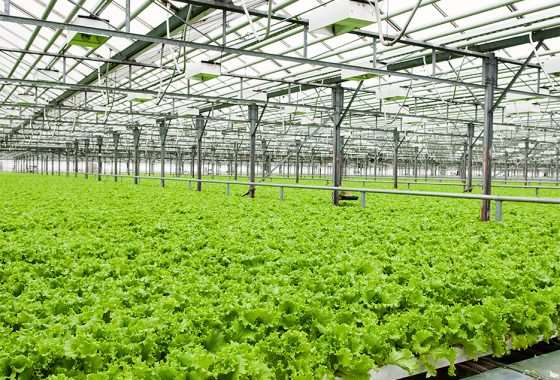
space, integrating more trees and perennials in urban design, and encouraging urban agriculture are all ways that cities can play a role in regenerative land management.
Cold Climate Adaptations
Given that food supply in cold climates relies heavily on imported products during the winter, adaptations such as greenhouses avoid carbon emissions, and provide healthy local foods, with very little reliance on chemical inputs.
Page | 88
Social and Economic Justice Regenerative land management advocates for fair labour conditions for workers, and equally supports a collective approach to agriculture, including the formation of associations, co-operatives, and democratic organizations. It equally contributes for recognition of the significance of restoring indigenous culture, knowledge, and practice in land management.
Page | 89
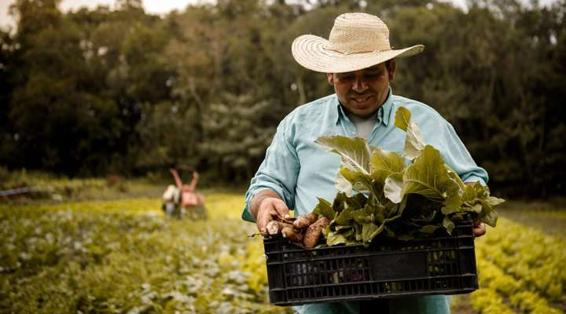
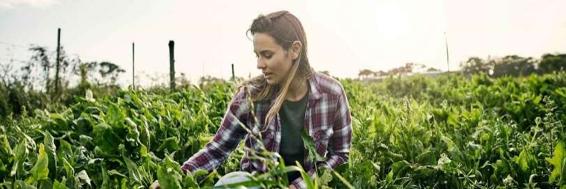
SUPPORTING
REGENERATIVE
AGRICULTURE
The following are elaborated under this section:
Procurement
Investment
Carbon offsets
Policy
Page | 90
SUPPORTING REGENERATIVE AGRICULTURE
Whereas there are several barriers to the adoption of regenerative agriculture in the global food system, it ought to be noted that, there are also many other producers who already use regenerative methods and who are helping build more localized democratic food systems. As food buyers, it is possible for us to help support producers who are farming regeneratively and get more involved in our communities as they build alternative networks to the corporate food system.
Below are a few ways through which regenerative agriculture can be supported:
Procurement
Health care institutions can support regenerative agriculture as part of their efforts in the fight against climate change and at the same time enhance food Page | 91
security. While the marketplace presently has few products that are third-party certified as regeneratively produced, there are emerging labels that will help hospitals use their purchasing power to support these practices.
Health care institutions can as well form purchasing relationships, or linkages with producers in their communities that are already making use of regenerative practices. Sourcing food regional y can enable you have ‘sufficient knowledge of your farmer’ and to ask producers direct questions about their practices. If you choose to purchase regenerative products from a producer who has not been certified, it is imperative to verify their practices in order to ensure that you are getting value for your money.
Page | 92
Investment
As a country we need to propel the transition to regenerative agriculture and act with urgency so as to secure our food and climate for the future. There are currently limited procurement opportunities for certified regeneratively produced products, however, institutions especially health care can help lead the transition by supporting regenerative agricultural practices through their investment portfolios. If health care shifted just a small portion of its investment assets to regenerative agriculture, chances are high, that it could play a vital role in enhancing the support of farmers to transition to regenerative agricultural practices.
Whereas some investments have been made to date much more is still needed to build out more regenerative food systems. With the assets that hospitals and health care systems manage they can Page | 93

invest directly in solutions across agricultural value chains, without any doubt this will positively impact on both human and environmental health.
Carbon offsets
Farmers practicing regenerative agriculture and achieving measurable results in sequestering carbon are doing a great service for this country. There are growing efforts to monetize the soil carbon gains which farmers are achieving by selling them in carbon offset markets. For instance, a farmer that sequesters a ton of carbon in their soil can work Page | 94
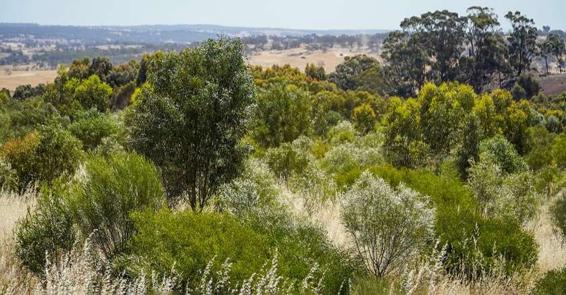
with a given organization to translate the sequestration into a credit that can be sold.
A carbon offset is a project, or activity that contributes to reduction of emissions of greenhouse gases to compensate for emissions created elsewhere. Offsets are an imperfect tool to help institutions offset emissions that they cannot reduce through energy efficiency, renewable energy, or other mitigation efforts. Carbon offsets should not be viewed as a replacement for actions to reduce an organization’s footprint, but rather as a bridge to technology, or competitive pricing that is not yet available.
Page | 95
There is an inherent level of risk in selecting offset projects because there are past examples of projects that did not meet their promised reductions, or had unintended implications. Presently, a number of offsets bought and sold are certified by a third party ensuring the offset is providing the promised emission reduction benefit.
The offset market for carbon sequestration from agriculture is in its infancy and caution should be used in pursuing this strategy. However, it is a compelling opportunity that could lead to the advancement of regenerative agriculture, foster farmers’ incomes, and motivate other farmers to adopt regenerative agricultural practices, at the same time.
Page | 96

Policy Review
Government agencies and other institutions can as well enact food purchasing policies that prioritize regeneratively produced foods. These internal policies can codify support for regenerative agriculture while at the same time serving as a tool to communicate with venders about preferences.
Internal policies may reference third-party regenerative agricultural certifications, agricultural practices such as no, or low till or cover cropping, Page | 97

on-farm indicators like soil carbon sequestration, or all the aforementioned.
RECOMMENDATIONS
Widespread adoption of regenerative agriculture will be important to effectively and systematically address some of today’s most pressing challenges such as climate change, food insecurity and malnutrition. Indeed, by adopting regenerative agriculture, the quality of soil and water will be greatly improved, bio-diversity will be enhanced Page | 98
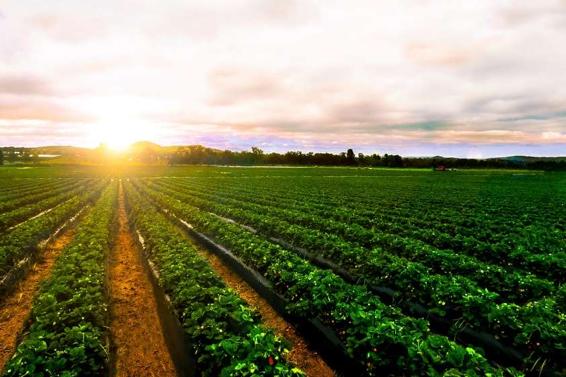
and all these will contribute to sustainable livelihoods.
Page | 99
Glossary
Adaptation relates to the changes in policies and behavior, as well as the responses and solutions used to deal with climate change.
Adaptive multi-paddock grazing-also called rotational grazing
Afforestation is the process of planting large numbers of trees on land which has few, or no trees on it, as opposed to the opposite, deforestation.
Agro-ecology relates to the study of bringing ecology principles into agriculture, including the diversity of species and genetics, recycling nutrients on the farm, and maintaining healthy soils.
Agro-forestry is the cultivation and use of trees and shrubs with crops and livestock in agricultural systems.
Agronomist is the advisor on soil management and the production of field crops.
Page | 100
Animal integration is a regenerative practice that mimics nature by adding livestock to farming.
Biochar–also called charcoal is a substance produced by heating organic material (manure or plant leaves, stalks, roots, husks, shells, seeds) in a low oxygen environment.
Bio-diversity is the existence of a wide diversity of plant and animal species and other organisms living in their natural environment.
Bio-dynamic relates to a system of farming that follows a sustainable, holistic approach which uses only organic, usually locally-sourced materials for fertilizing and soil conditioning, views the farm as a closed, diversified ecosystem, and often bases farming activities on lunar cycles.
Bio-sequestration is the capture and storage of the greenhouse gas carbon dioxide in the atmosphere by biological processes.
Page | 101
Carbon sequestration is the process where airborne carbon dioxide is removed from the air and stored in plants as leaves, roots, stems, trunks and soils. This is also called terrestrial carbon sequestration or bio-sequestration.
Carbon cycle is the way in which carbon compounds are processed in the environment, typically involving carbon dioxide being incorporated into plants and some other organisms by photosynthesis.
Carbon footprint is the amount of greenhouse gases and specifically carbon dioxide emitted by something (such as a person’s activities or a product’s manufacture and transport) during a given period.
Carbon sink is a long-term storage reservoir for carbon, such as soil, wetlands, prairies, forests.
Chemical contamination is a clear indication of the presence of chemicals where they should not be Page | 102
or are present in an amount that is in a higher concentration than the amount that is attributed as safe.
Climate change is a large-scale, long-term shift in the
planet’s
weather
patterns
and
average temperatures.
Community gardens is when members of the public are allowed to rent small garden plots on a larger lot of ground. The land can be privately owned or owned by a government agency.
Compacted soil relates to soils where the air pockets between soil particles have been reduced to such an extent that water can no longer infiltrate the soil, air is not held in the soil and plant roots are unable to be established in the soil.
Compost relates to organic material, such as leaves, stalks and roots, that has decomposed and is being added to soil as a fertilizer and to rejuvenate soil.
Page | 103
Conservation tillage relates to methods for growing annual crops in the previous year’s crop residue (such as stems and roots) which reduce soil erosion and retain water and nutrients on the land; the farmers practicing conservation til age leave 30
percent of the crop residue on the fields.
Cover crop relates to a crop planted with the intent to prevent soil erosion after harvesting the primary crop.
Crop rotation is the planting of different crops on the land in successive years.
Decarbonization literally means the reduction of carbon.
Degraded soil also known as exhausted soil, relates to soil that is no longer able to support crops or other plant life due to loss of nutrients in the soil.
Desertification is the process of land turning into desert as the quality of the soil declines over time.
Page | 104
Ecosystem is the complex of a community of organisms and its environment functioning as an ecological unit.
Ecological restoration is the activity that attempts to return an ecosystem to an undisturbed natural state.
Erosion is the geological process in which earthen materials are worn away and transported by natural forces such as wind or water.
Farmers’ market is a retail market where farmers sell their produce, meat and eggs directly to the consumers.
Fast food is food that is prepared and served quickly.
Greenhouse gases is a group of gases that hover in the atmosphere and that trap heat near the earth’s surface, among them are carbon dioxide, methane, nitrous oxide, hydrofluorcarbons, perfluorcarbons and sulfur hexafluoride.
Page | 105
Green manure is created by leaving uprooted or sown crop parts to wither on a field so that they serve soil protection and can add beneficial nutrients to the soil.
Integrated crop-livestock systems relate to farms that include livestock on the landscape as well as crops; they are more beneficial in returning carbon to the soil and maintaining healthy soils.
Inter-cropping is the growing of two or more different crops on the same piece of land in close proximity, such as planting shade tolerant plants next to tal er leafier plants.
Market gardening is a relatively small operation, usually under one acre, used for the smal -scale production of vegetables, flowers, and fruits as cash crops.
Managed grazing are farm practices that attempt to improve animal pastures by imitating the natural Page | 106
activity of migratory herds that cluster tightly for protection (also called “mob grazing”).
Microbes, also known as microorganisms are tiny living things that are found al around us and are too small to be seen by the naked eye, living in water, soil, and in the air.
Mixed crop livestock systems are agriculture systems where both crops and livestock are raised on the same farm, they are also called integrated crop livestock systems.
Mixed farming is the practice of growing cash crops as well as raising animals.
Monoculture is the growing of the same crop over a large area.
Mulch is a material (such as decaying leaves, bark, or compost) spread around or over a plant to enrich the soil, or to reduce weeds, erosion or evaporation, or even to keep fruit (such as strawberries) clean.
Page | 107
No-till agriculture is the keeping of crop residues on the land and leaving the earth largely undisturbed during planting.
Organic farming relates to farming that does not use pesticides and artificial fertilizers but instead uses organic fertilizers and natural pesticide control.
Organic food is food that is produced without pesticides, fertilizers, growth hormones, antibiotics, artificial additives, food coloring, ionizing radiation, and is not genetically modified in any way.
Organic matter or organic material is manure and particles of once-living plants and animals.
Pasture is forage plants that are consumed by animals through grazing (can include some forms of legumes, e.g., clover and alfalfa).
Pasture cropping is a farming technique where annual crops are sown into a perennial grassland that is either entering dormancy or that has been Page | 108
prepared by grazing to take away the competitive advantage of the perennial grasses in the pasture.
Perennial are plants that live more than two years and the name literally translates to “through the years.”
Permaculture is a method of farming that involves caring for the earth and the earth’s natural systems, providing for people to use the resources they need and returning waste to the earth’s natural systems.
Pollinator is a bee, moth, butterfly or other insect; bird; bat; or other animal that moves pollen from the male anthers to the female stigma of flowering plants. The wind can also serve as a pollinator.
Once pollinated, the plant can produce fruits, vegetables and seeds.
Regenerative agriculture is using farming techniques that enhance the land, including regenerating topsoil and increasing bio-diversity; are resilient to climate change; that provide a Page | 109
livelihood for the farm families and the local community.
Resilience is the ability of nature and mankind to adapt and survive in the face of change.
Riparian buffer relates to a vegetated area (also known as a “buffer strip”) located near a stream, usually forested, which helps shade and partially protect the stream from the impact of adjacent land uses.
Rotational grazing, also known as adaptive multi-paddock grazing is a practice where grazing land is divided into segments cal ed paddocks, with the grazing animals (cattle, sheep, goats, chickens, turkeys) moved from paddock to paddock every few days.
Salinization is the process by which water-soluble salts accumulate in the soil.
Page | 110
Silvopasture is the practice of integrating trees, forage and the grazing of domesticated animals in a mutually beneficial way.
Soil amendment are materials added to the soil to make it more fertile such as compost, biochar, manure and artificial fertilizer.
Soil depletion occurs when the components which contribute to fertility are removed and not replaced, and the conditions which support soil's fertility are not maintained.
Soil pH relates to the scale of acidity or alkalinity of soil, this is measured to give an indication of what crops would be suitable to grow and if any adjustments are needed to make the soil the right condition for a certain crop.
Soil structure relates to the way individual particles of sand, silt and clay are assembled and the spaces located between them.
Page | 111
Soil rejuvenation is returning carbon to the soil, especial y when it has been significantly reduced.
Sustainable agriculture is the using of farming techniques that are economically viable, protect the water resources from pol ution, treat livestock animals humanely and maintain soil fertility for future generation to productively farm the land.
Topsoil also known as humus is the layer of soil where plant roots are found. Consists of organic material, silt, sand and clay. Also called humus.
Index
Page | 112
adaptive grazing
biological enemies ..... .... 87
management ..... .... .... 80
carbon emissions .. .... ... 91
Adaptive grazing
carbon farming ...... .... .. 29
management ..... .... .... 81
carbon offset .. .. .... 97, 98
agribusinesses ..... .... 27, 28
Carbon offsets .... ... 97, 98
agricultural certifications
carbon sequestration 28, 38,
.... ..... .... .... .... .... . 101
56, 59, 76, 99, 101, 109,
agricultural diversification
124
.... ..... .... .... .... .... ... 24
chemical contamination . 13
agro-ecological methods . 18
chemical inputs . 25, 44, 59,
agro-ecology ..... .... .... ... 13
85, 91
agro-forestry.... .. 13, 58, 77
chemical pesticides ... 40, 56
Agroforestry .... .... .. 77, 78
climate change .. 11, 36, 59,
agronomists .... .... .... .... 33
66, 76, 94, 102, 106,
anaerobic environment ... 62
117
Annual organic cropping 62
climate-smart .... ..... .... . 29
aquatic inhabitants .... .... 88
Compost tea ...... .... .... . 64
Biochar .. .. .... . 60, 61, 108
conventional agriculture . 55
biodiversity.. 12, 18, 24, 28,
Cover cropping ..... .. 69, 70
40, 43, 44, 50, 56, 59,
crop insurance .. .... . 32, 71
78, 102, 117
crop rotations ... 33, 44, 68,
bio-dynamic ...... .... . 13, 14
72
biodynamic agriculture ... 13
decarbonization, .. .... .... 13
healthy soil .. 30, 43, 44, 71,
degradation .. .... .... . 23, 44
84
democratizing the food
Healthy soil .... .... .... ..... 11
system ... .... .... .... .... 25
holistic management ..... 14
depletion .... .... .... .... .... 13
holistically managed grazing
desertification ..... .... 13, 45
... .... ..... .... .... .... .... 24
disc planters ..... .... .... ... 83
indoor breeding ...... .... . 87
dril ers ... .... .... .... .... .... 83
industrial agriculture 11, 27,
earth’s carbon system .... 18
70
ecological aquaculture ... 17
industrial food system ... 25,
environmental health 12, 97
46
environmental sustainability
methane emissions .. .... . 67
.... ..... .... .... .... .. 24, 40
microbiome ...... .... . 11, 78
erosion .. 13, 38, 45, 54, 70,
micro-organisms 44, 64, 66,
73, 83, 84, 85, 111
73, 84
fallow land ... .... .... ..... . 40
mono-cropping ..... .. 40, 70
financial risk .. .... ..... .... 32
monoculture ..... .... .... .. 25
global warming ..... .... .... 22
monocultures 26, 27, 42, 55
Green manure ... .... ..... . 69
mulching ..... .... .... .... ... 84
greenhouse effect .... ..... 59
mycelium .... .... .... .... ... 10
Greenhouse gases ... 22, 113
natural ecosystems .... .... 43
natural farming .. .... .... . 13
Page | 114
No-till farming .... .... 38, 83
Silvopasture .... .... 88, 118
organic farming .. 13, 23, 35
Soil ..... 10, 15, 16, 73, 118,
Organic matter ... ... 23, 116
119, 124
Pasture cropping ..... .... . 83
soil food web ... .... ..... .. 10
permaculture .... .... .... ... 13
soil moisture .... ..... . 23, 84
pest invasions .. .... .... .... 13
soil pollution ..... .... .... .. 59
planned grazing ... .... 45, 79
soil vitality ... .... .... ..... . 35
pollinator habitat ... .... ... 75
soluble nutrients .. .... .... 64
reforestation ..... .... ..... .. 17
storm flooding ... .... .... . 84
Regenerative agriculture 10,
terra preta ..... .... . 58, 60, 61
12, 13, 18, 23, 38, 40,
tillage ... 40, 58, 84, 85, 111
72, 117
water pollution ... 38, 47, 56
rehabilitating soil .... .... .. 16
water purification ..... .... 11
restoration ecology ... .... 14
water retention .... .... 23, 78
riparian buffer .... .... .... . 88
water run-offs ... .... .... .. 88
Riparian buffers ... .... .... 89
water-retention capacity . 38
salinization .... ..... .... .... 13
windbreaks .... ..... ... 88, 89
sedimentation ..... .... ..... 88
Page | 115
References
Adams, W.M., Hulme, D. 2001. If community conservation is the answer in Africa, what is the question? Oryx 35, 193-200.
Altieri, M.A. 2018. Agroecology: The science of Sustainable Agriculture. Boca Raton: CRC Press.
Bai, X., Huang, Y., Ren, W., Coyne, M., Jacinthe, P.A., Tao, B., Hui, D., Yang, J., Matocha, C. 2019. Responses of soil carbon sequestration to climatesmart agriculture practices: A meta-analysis. Global change biology 25(8), 2591-2606.
Basche A.D, DeLonge M.S. 2017. The impact of continuous living cover on soil hydrologic properties: a meta-analysis.
Soil Science Society of America. 81, 1179–1190
Basche, A.D., Archontoulis, S.A., Kaspar, T.K., Jaynes, D.B., Parkin, T.B., Miguez. F.E. 2016. Simulating longterm impacts of cover crops and climate change on crop production and environmental outcomes in the Midwestern United States. Agriculture, Ecosystems and the Environment 218, 95–106. doi:10.1016/j. agee.2015.11.011.
Page | 116
Brown, G. 2016. Regeneration of Our Lands: A Producer’s Perspective. TEDxGrandForks. [Online Video] available at: https://www.youtube.com/
watch?v=QfTZ0rnowcc.
Accessed 24.04.2020
Brown, G. 2018. Dirt to Soil: One Family’s Journey into Regenerative Agriculture. White River Junction: Chelsea Green Publishing.
Butterfield, J., Bingham, S. and Savory, A., 2019. Holistic Management Handbook: Regenerating Your Land and Growing Your Profits. Washington D.C: Island Press.
Codur, A.M., Watson, J. 2018. Climate smart or regenerative agriculture. GDAE Climate Policy Brief, 9
Duncan, T., 2016. Case Study: Taranaki Farm Regenerative Agriculture. Pathways to Integrated Ecological Farming. In
: Chabay, I., Frick, M., Helgeson, J. (eds). Land restoration: Reclaiming landscapes for a sustainable future. London: Academic Press pp. 271-287
Page | 117
FAO and RUAF Foundation, 2015. A vision for City Region Food Systems-Building sustainable and resilient city regions.
Francis, C., Harwood, R. 1985. Enough food: Achieving Food Security Through Regenerative Agriculture. Emmaus, PA: Rodale Institute.
The Carbon Underground and Regenerative Agriculture Initiative 2017. What is Regenerative Agriculture. [Online Article].
Available
at:
https://
regenerationinternational.org/2017/02/24/what-isregenerative-agriculture// Accessed 29.06.2020
Toensmeier, E., 2016. The Carbon Farming Solution: A Global Toolkit of Perennial Crops and Regenerative Agriculture Practices for Climate Change Mitigation and Food Security. White River Junction: Chelsea Green Publishing.
Verhulst, N., Francois, I., Govaerts, B., 2012. Conservation agriculture, improving soil quality for sustainable production systems? CIMMYT.
Page | 118
Vodouhê DS, Mensah RK, Sanfillippo D, Assogba, G. 2009.
A new tool for improving organic cotton yields in Africa.
Pesticides News 84:6-9
Widgren, M., Sutton, J.E. 2004. Islands of intensive agriculture in Eastern Africa: Past & present. Oxford: James Currey
Williamson, S., 2011. Understanding the Full Costs of Pesticides: Experience from the Field, with a Focus on Africa, in: Stoytcheva, M. (Ed.), Pesticides - The Impacts of Pesticides
Exposure.
InTech.
https://doi.
org/10.5772/14055
Page | 119
































































